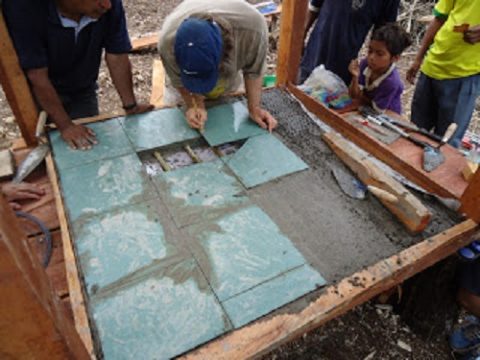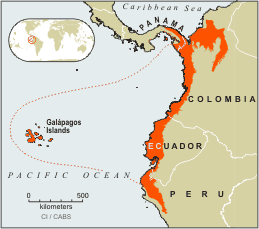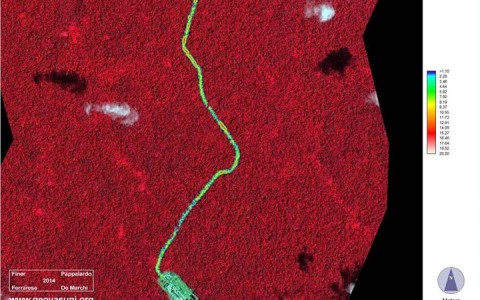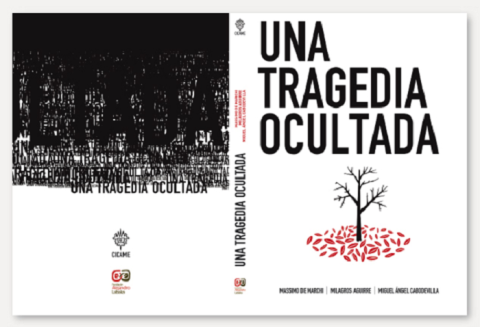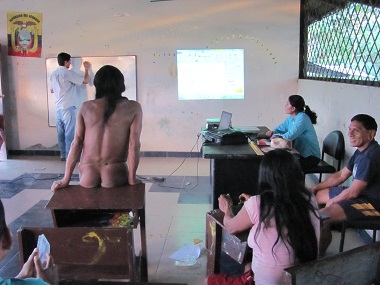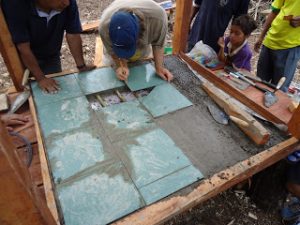 In Part 2 of this interview about human waste disposal and water sanitation Chris tells us the solution to all of the problems mentioned in Part 1: The Problem.
In Part 2 of this interview about human waste disposal and water sanitation Chris tells us the solution to all of the problems mentioned in Part 1: The Problem.
How did the new design for a sustainable human waste disposal system come into being?
In the 1950s, before the regrettable Vietnam War, a team of Vietnamese doctors analyzed why so many people were sick and how to control this. They found a great number of people were collecting “night soil” in buckets that were emptied in the morning directly in agricultural fields, where people worked largely barefoot.
The doctors realized that 90% of the fertilizer is in the urine that transmits no disease when dispersed in the soil, while essentially all the health risk is packaged with only 10% of the fertilizer in the feces. The answer was to keep the urine separate and set it free on the soil immediately, while jailing up the shit, until it is not shit any more.
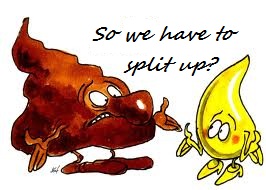
In their case, they applied a detention time of three months, plus they added wood ash. This team that invented Urine-diverting Dry Toilets (UDDTs) was apparently anonymous, although it would be good for credit to go where credit is due, and to know more about the process.
UDDTs were later picked up by the Stockholm Environment Institute in Sweden, as a solution for the abundant cabins out in the Swedish woods, where running water is not feasible in the winter due to freezing, but they would never accept that their many beautiful lakes get contaminated.
They also actively promote these as a means to improve the health and sanitation of billions of people in the world.
I also suspect that certain ancient cultures had UDDTs, in particular the densely populated Amazonian peoples that made Terra Preta do Indio (Indian’s Black Soil, in Portuguese), until they were apparently decimated by Old World diseases soon after the arrival of Europeans.
No one knows yet exactly how they made these deep, dark, rich, long-lasting, productive soils, in the midst of extremely poor, highly weathered, clayey Amazonian lands, but I highly doubt that they were wasting the nutrients in their feces while they were doing so.
Documentary: The Secret of El Dorado
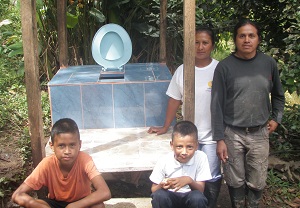 Can you explain how the design for this human waste disposal system works?
Can you explain how the design for this human waste disposal system works?
It is very simple and seeks to follow the natural order of things. The urine and feces that the body excretes separately are kept separate, to be dealt with separately, since they are totally different things.
The urine is caught in a funnel toward the front, since both men and women pee forward, and it goes back to the soil and the plants, where it transmits no diseases. (A bit of the urine from women may drip farther back, but this small amount is not a problem.)
Urine is normally sterile and there are only a handful of weird diseases that it ever transmits, plus for that to happen it has to go into rivers or contact the next person directly. The various microbes of urinary tract infections and vaginal infections either get destroyed rapidly in the soil or are natural inhabitants of the soil anyway. Many of these come from the gut, but here they are in much smaller numbers and are highly diluted, as compared to in the feces.
In addition, sexually transmitted diseases cannot live outside of the body any significant amount of time. 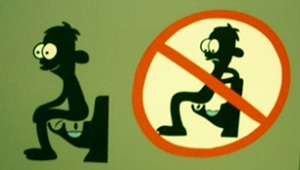
Feces drop farther back, directly into alternately used chambers or exchangeable receptacles and are covered immediately with dry cover material, such as soil, wood ash, sawdust, rice hulls, or a mix of these. They are then stored, protected from the rain, for at least six months in tropical countries or a year in temperate countries, so that all the disease organisms die and it all just becomes soil.
In fact, all the worst diseases, like cholera, diarrhea and typhoid, are wiped out in a much shorter time and the guideline of six months or a year is so that intestinal worm eggs, which are the most resistant pathogens but are much less life-threatening, are also eliminated. Most victims of these worms do not even know that they have them.
Shit is a temporary condition. After its jail sentence, it’s no longer shit: we open the chambers or receptacles and find dark, humus-rich soil, with no smell or health risk.
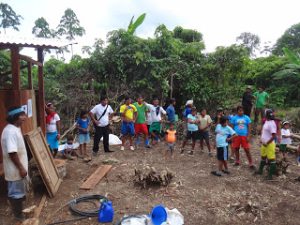 This stands to reason, since our pathogens are adapted to living in water without oxygen inside our guts, not in a pile of dry material, especially if there is soil in the pile, with all of its bacteria, fungus, protozoans and invertebrates.
This stands to reason, since our pathogens are adapted to living in water without oxygen inside our guts, not in a pile of dry material, especially if there is soil in the pile, with all of its bacteria, fungus, protozoans and invertebrates.
These soil organisms are entirely at home in such a pile, where they eat and rip up anything that is over-abundant or out of place.
After this jail sentence, we can also apply secondary treatments involving heat, sun, earthworms or composting together with food scraps (especially thermophilic composting), for extra peace of mind or to speed things up.
We can build UDDTs for sitting or for squatting. In addition to all the health benefits mentioned above for squatting, this also allows for better separation of the urine and easier, less expensive construction.
Modern Western People tend to suffer from a psychological disease called fecophobia, which is an irrational fear of feces. Shit is a normal part of life and there is no disease in it that the user did not have from before, so, if the person is healthy, there is no health risk in his or her shit, only an unpleasant smell to be controlled and nutrients to be taken advantage of. If the user is sick, their pathogens get destroyed in the UDDT, as long as it is being managed properly.
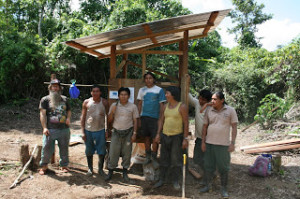 There can be a health risk if, in a multi-family system, some of the users are sick and they are not using their UDDTs properly, such that some of their feces get mixed into the urine, but this can be controlled by storing the urine for a number of months (depending on the climate) or distributing it below the surface of the soil, where no one will have contact with it. The greatest health risk occurs when we do not think rationally about this and do the irrational act of throwing it in the river, where others can have contact immediately.
There can be a health risk if, in a multi-family system, some of the users are sick and they are not using their UDDTs properly, such that some of their feces get mixed into the urine, but this can be controlled by storing the urine for a number of months (depending on the climate) or distributing it below the surface of the soil, where no one will have contact with it. The greatest health risk occurs when we do not think rationally about this and do the irrational act of throwing it in the river, where others can have contact immediately.
UDDTs are literally a matter of loving and trusting Mother Earth, in which we respectfully give back that which we no longer need, to let her deal with it. If we turn back the clock on shit, we find delicious food on the table. If we turn back the clock again (twice in the case of meat), we find beautiful plants growing in the sunlight. One more click and we see rich soil, so what is to keep it from becoming soil again, if we turn the dial forward again?
(Some commercial models do not use cover material, but rather have electric fans to make sure the air is always going away from the user. One of these is the Ecodomeo, which has a pedal-operated conveyor belt that carries the shit away)
The design has changed very little since the 1950’s. Have you made any modifications to make it better suit the Ecuadorian Andes and Amazon?
My line of work has been aimed at making UDDTs as easy and inexpensive to build as possible, while keeping user acceptance high.
In other words, my goal is for the building of a good dry toilet to be more a matter of a paradigm shift than a big capital investment. For this reason, I have found ways to build with readily available materials, especially since factory-made units are mostly not available in Ecuador.
One of the biggest changes I made from the start was to distribute the urine immediately via perforated hoses in the soil, instead of storing the urine in jugs, to later dilute and apply it as fertilizer among crop plants.
Organic farmers looking for every bit of natural fertilizer for their plants might be willing to do the latter, but the average user will not want to deal with smelly, fermenting urine every few days. In most of my designs, these hoses are buried 10 cm below the surface of the soil, among productive plants, like fruit trees, that can put the nutrients to good use.
In the interest of making UDDTs accessible to everyone, I published a paper in the Austrian online magazine, Sustainable Sanitation Practice, on Simple UDDTs that may be built with recycled and other readily available materials, such as disposable plastic bottles and wood: Some of the models shown here cost close to nothing.
Another surprising innovation is the storage of feces in the ubiquitous, woven, polypropylene plastic sacks used to sell rice, flour and many other products. These make excellent receptacles for this use, since humidity can evaporate out and oxygen can filter in, but flies, smells and pathogens cannot get in or out.
At first glance, people would imagine liquids oozing out, but they never do, thanks to the dry and absorbent cover material. Also, these sacks last for years and years, if they are not exposed to the sun’s UV rays. One of the biggest advantages of using interchangeable containers, like sacks, is that, at the first sign of any problems with smell or flies, you can simply change the container and the problem is resolved immediately. Another is that the feces get covered better in a small container, as compared to a big chamber.
One of the most practical ways to use these sacks is to place them as liners of plastic bins, so the sacks are held open nicely and it is easy to change them. It is also good to make holes in the bottom of the bin, and have it propped up off the ground, to allow humidity to evaporate out and for oxygen to get in, since all the worst smells associated with latrines and sewer lines are generated by bacteria that live in the absence of oxygen.
Even more surprising for many, I have found that the finished compost from this system is the best material to cover new shit. Many of the right soil microbes are still there, likely in an inactive state (like fungal spores and bacterial endospores), ready to jump back into action when there is more shit (with its moisture) to have a party in.
In this way, natural selection and the rapid evolution of microbes are working in our favor, helping them get more efficient at breaking down exactly our shit, in exactly the conditions we keep them in. In contrast, the system of water-based toilets and trying to kill the germs in a short time with chemicals is a recipe for evolution to produce microbes that are more and more resistant to the chemicals used and that are potentially more and more virulent in disease
This recycling of cover material makes the operation of UDDTs much more practical and inexpensive, especially in cities and isolated locations, since new cover material does not need to be acquired and transported constantly, nor does much of the finished compost need to trucked away. That which does have to go would not have to go very far, if neighbors, nearby neighborhoods or nearby cities sign up for UDDTs or if urban agriculture is being done.
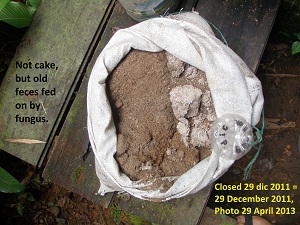
Another good reason to use the finished compost as cover material is that it filters odors much more efficiently than most other materials, removing and breaking down up to 99% of volatile organic compounds.
It has also been shown to eliminate 75% of the reduced sulfur compound emissions that most contribute to the characteristic aroma of shit in a laboratory study of conditions similar to those of commercial composting operations (Büyüksönmez et al. 2012, ), and up to 97% of the stench from landfills (Hurst et al. 2005)
There have been a couple of isolated cases of dogs or rats being attracted by the odor and messing with the sack that is receiving the feces, but only when sawdust was being used a cover material, not when finished compost was being used (and this is another reason for the plastic bin mentioned above).
Furthermore, there is research showing that children who grow up in overly clean and disinfected homes, without contact with soil, have a much higher incidence of asthma and allergies, since their immune systems do not have anything to train on
Videos about the Hygiene Hypothesis of Disease
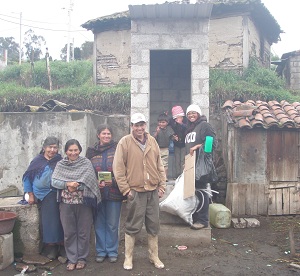
So, having soil-like decomposed feces in the bathroom as cover material may well be a health benefit, instead of a health risk like one might suspect, as long as we are certain that the actual pathogens have died during its storage or treatment.
Humans evolved in complete ecosystems, including all the normal microbes, not in sterilized boxes, so it would make sense that bringing more parts of the ecosystem into the city would make it healthier for people.
This is all the more reason to build green, living roofs and vertical gardens on urban apartment buildings (and I have figured out how to do this with disposable Coke bottles).
At the moment, you are working with Achuar communities to implement this system. Has it been difficult to explain the environmental and health benefits of this system? What are some of the problems and breakthroughs you have had?
Changing anyone’s toilet habits is an imminently cultural endeavor and it is usually an uphill battle. People need to understand the concept, but, almost more importantly, they need to see and smell that UDDTs work.
I have built UDDTs with a variety of ethnic groups here in Ecuador, including mestizos, Kichwa, Shuar, Achuar, Waorani, and a little bit among the Secoyas. Of these, the Achuar have, so far, shown the greatest degree of acceptance. They are culturally very hygienic and traditionally live in houses scattered widely out in the forest, so they always had lots of forest to hygienically deposit their feces into. They covered them with soil and leaves, where the ecosystem absorbs them, without anyone else having contact with them.
The Achuar have only had permanent contact with white people starting in about 1970, when schools and landing strips began to be built and they started settling fairly densely around these. It is also worth remembering that all the worst diseases were brought by the Europeans and it is estimated that 90% of the indigenous people in America died of those diseases when Europeans first came to America.
I think that potentially the Achuar have been quite concerned about fecal contamination for the last several decades, since they started living together in villages. Each family could be fairly certain of its own health and not so certain of that of the others, but all the children come together daily at the school and do their business behind the same trees. Also, it is a matter of privacy, since some of the villages are pretty large, with the houses fairly close to one another.
When I explain UDDTs to them, I emphasize the fact that, with open defecation in the woods, all these microbial enemies are set free, ready to attack us at any moment, whereas, with a dry toilet, these enemies are jailed up until they all die. They usually get the idea very quickly, but it is still a process to get them to build and use them, since old habits die slowly in any group of people.
In the last year and a half, we have built 31 UDDTs in 15 Achuar villages with the ACRA Foundation (of Italy) and the Chankuap Foundation (of Macas, Ecuador), with support from the European Union and the Municipality of Taisha
Over several years, the Pachamama Foundation and I have built 21 UDDTs in the Achuar villages of Pumpuentsa and Kurintsa, with a high degree of acceptance
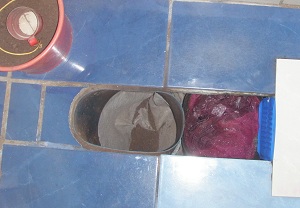 More are being built all the time and volunteers are welcome to help with this. As I write this, the Achuar village of Juyukamentsa is organizing to build UDDTs for each of 16 families and I would like to find a volunteer to help them, especially to contribute to good replication of the design, wood preservation, and education about their proper use and maintenance.
More are being built all the time and volunteers are welcome to help with this. As I write this, the Achuar village of Juyukamentsa is organizing to build UDDTs for each of 16 families and I would like to find a volunteer to help them, especially to contribute to good replication of the design, wood preservation, and education about their proper use and maintenance.
[spoiler title=”Videos of Achuar learning about UDDTs” ]
[/spoiler]
So if the Amazonian Achuar tribe can be convinced, could your average Australian, European, or North American can be convinced as well? Can you envision a time when the whole of humanity uses this system or are our heads too far stuck up our collective asses to change our behavior for the better?
At first glance, this may seem like a system that is only applicable for hippies, organic farmers, and Indians out in the woods, but, in reality, it is a prime alternative for everyone who wants to be civilized with their neighbors, future generations, and Nature. It is also fully feasible in cities, especially if the relatively small amount of shit is stored on-site during its jail sentence and is then recycled as cover material, while the urine and excess soil is used locally in urban agriculture. (Remember the vertical gardens I mentioned?)
We can also greatly shorten the jail sentence by storing the shit in solar ovens, potentially down to less than a day of good sun, since all we need to kill fecal pathogens is 7 minutes at 70°C, 30 minutes at 65°C, 2 hours at 60°C, 15 hours at 55°C, or 3 days at 50°C. (Feacham et al. 1983 and Strauch 1991, 1998, cited by Richard Higgins)
This is also more practical than cooking lunch in a solar oven, since untimely clouds do not make us put up with hunger.
The trick is to make these toilets as easy-to-use and presentable as possible. We currently ask users to add a cup of cover material after each use, but they do not always remember to do so and they often do not aim very well, spilling it into the urine funnel and around the toilet. For this reason, mechanisms are being worked out to add the cover material mechanically, such as in one project (that I was marginally involved in) that works via a pedal:
I even have a design in mind in which the user will not have to remember to step on a pedal, nor would it involve electronic sensors.
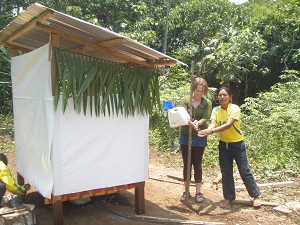 Another factor is that many users will not want to deal with the shit and the piss. This can be resolved by setting up service-provider companies that come to homes and offices to change the containers, hygienically process the contents, and (optimally) put the resulting fertilizers back to work in their own agriculture.
Another factor is that many users will not want to deal with the shit and the piss. This can be resolved by setting up service-provider companies that come to homes and offices to change the containers, hygienically process the contents, and (optimally) put the resulting fertilizers back to work in their own agriculture.
With these companies applying the final products in agriculture themselves, this would increase the reliability that everything gets its proper treatment, while converting it back to delicious fruits and vegetables, which will be infinitely easier to market than the pee and the poop.
This nutrient recycling is logical and necessary if we want to have sustainable agriculture and food security. An adult eats a lot of food, but is not growing, so all the nutrients eventually come back out and, if we give them back to our crop plants, they have exactly what they need to make our food again (together with solar energy).
In this way, we can forget about chemical fertilizers, if we also have a stable population size. Of course, we have to eventually forget about chemical fertilizers, because they come from non-renewable sources.
Commercial ammonia and urea, for nitrogenous fertilizer, are produced with natural gas from oil wells (as a hydrogen source to combine with nitrogen from the air), and natural gas is already starting to run out, with the peak of production estimated to occur in 2020
It is even estimated that half of the protein found in present-day human beings was made with nitrogen originally fixed by this artificial process, thus being one more case of fossil fuels subsidizing economic and population growth.
Phosphorus is also a finite, non-renewable, unreplaceable resource and phosphoric rock extraction is estimated to peak around 2035, with reserves remaining mainly in Morocco after that. Peak Phosphorous is the scariest thing you’ve never heard of.
UDDTs are an important tool for combating Global Climate Disruption more CO2 absorbed by fertilizing plants and trees,more carbon sequestered into the soil by integrating organic matter,less methane emitted by avoiding anaerobic fermentation of feces in water,less need for chemical fertilizers (another big source of GHGs),less use of petroleum for pumping and treating water,less need for cement for building big sewers (since cement production is a big source of CO2.
Improved water-holding capacity of soils, in the face of droughts, easy construction above the high water line (or on a floating structure), in the face of floods,less demand for precious clean water.
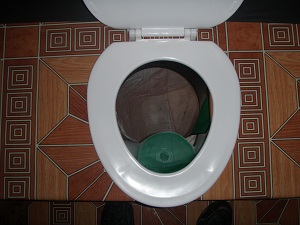
Many rule out the mainstreaming of these dry toilets, as they cannot imagine the masses changing their toilet habits. This sort of toilet is not for everyone, but it is for everyone who wants to build a sustainable future for their children and those who do not learn to recycle nutrients will eventually go the way of the dinosaurs.
The Chinese have been recycling nutrients into the soil for thousands of years and this is one of the reasons they have had a continuous, advanced culture for such a long time. Recycling animal and human dung is the key to sustainable farming
Of course, they have not always done so in such an organized way, but there are now more than a million modern UDDTs functioning in China
I am convinced that more people can learn to do what cats do by instinct: cover their shit with soil. Let’s keep water clean by keeping shit dirty.
Thank you so much for sharing your time and knowledge! To follow Chris Canaday and his team’s work, check out these websites:
http://inodoroseco.blogspot.com/
http://omaere.wordpress.com/


